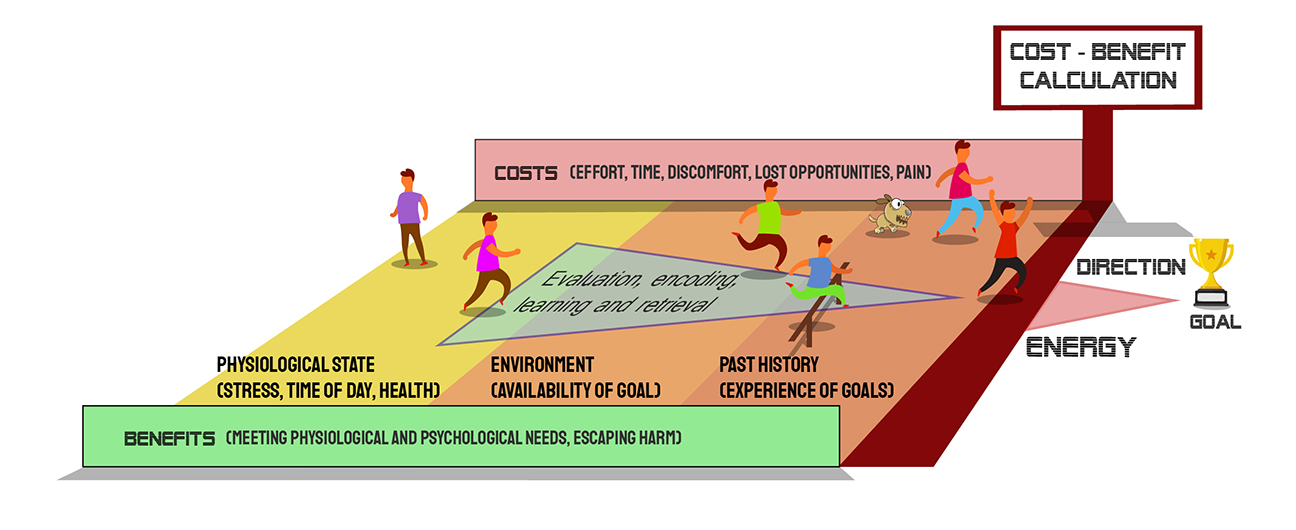Motivation is a prerequisite for learning. It emanates from a cascade of processes and is influenced by both intrinsic and extrinsic factors, including our personal history and experiences, our physiological state, and our environment. How do these processes and factors interact with each other to motivate us – or not! – to achieve a goal? We have not yet unraveled all the mysteries of this complex phenomenon, but we have some explanations. Here is one that, although simplified, is meant to be enlightening!
The motivation is a psychological process responsible for initiating, sustaining, fixing, or terminating a behavior. It is, in a way, the force that drives us to act and think in one way or another.

Fig. 1. Diagram of the influencing factors and processes that are involved in motivation (source)
The development of the motivation process:
- The information included in the cost-benefit calculation for each specific reason is processed in several ways.
- The value of each of the relevant costs and benefits is calculated, which determines the appropriate direction and strength for the action to be initiated.
- When an objective is achieved, this value is coded.
- Once the value is effectively coded, it can be stored.
- When the subject wishes to achieve the same objective again, the stored value will be retrieved.
Although it is known that cost-benefit calculation is central to motivation, it is not yet possible to conceptualize how it works. However, it is also known that the operation involves the processing of an impressive diversity of information, with multiple processing and control systems in action, and different types of costs and benefits.







Leave A Comment